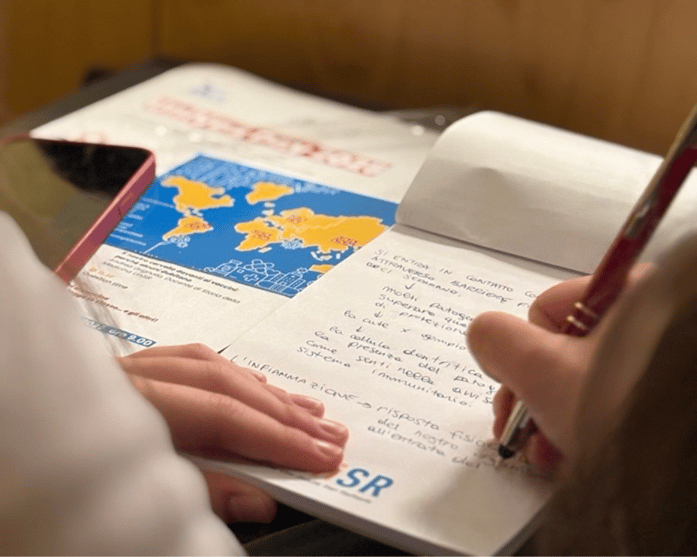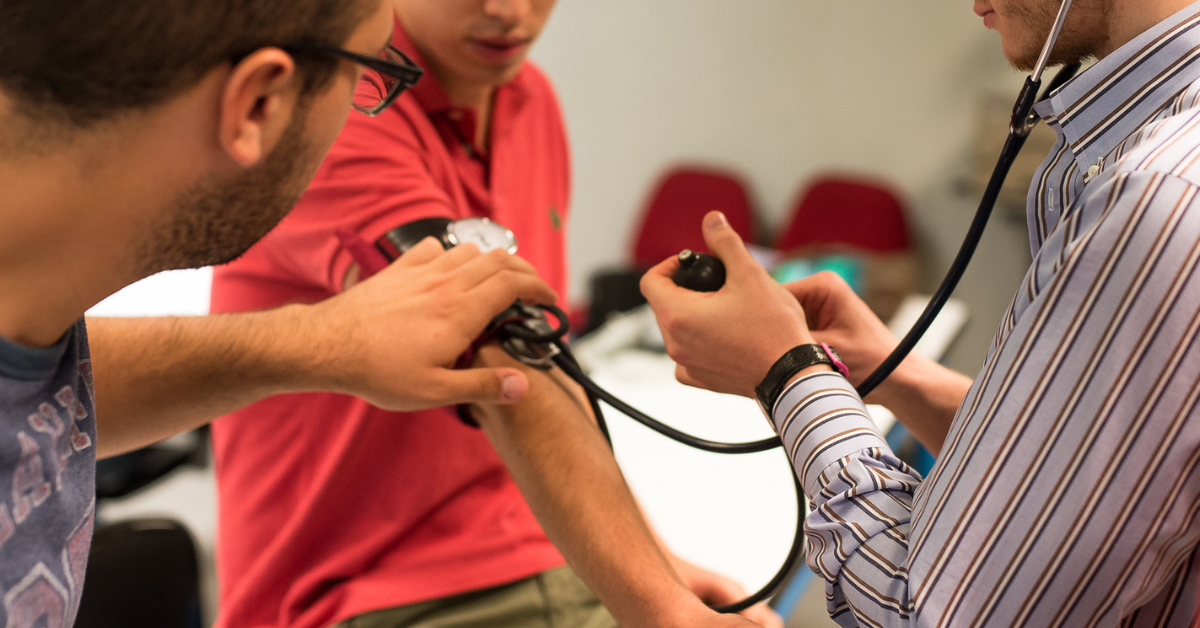Born from curiosity inside a medical classroom, Uni4Me is the first student-conceived research study in the UniSR International MD Program — establishing baseline data for public health while redefining student roles in science.
What happens when a group of medical students dares to turn a personal curiosity into a full-scale research study? At UniSR, this bold leap gave birth to Uni4Me — the very first scientific project entirely conceived, designed, and carried out by students in the International Medical Doctor Program (IMDP).
What began as a simple question about heavy metal exposure in healthy young adults became a groundbreaking example of what student-led science can achieve when supported by an entire academic community.
This question emerged during a third-year Clinical Pathology class. One student shared a personal anecdote: his mother’s blood test had revealed elevated mercury levels, despite no specific symptoms. The case triggered discussion — and ultimately, an idea: what if we test ourselves?
.jpg?width=800&height=559&name=Uni4Me_students_IMDP_Medical%20Doctor%20Program%20(8).jpg)
A Research Project From the Classroom Up
Unlike traditional research models that begin in laboratories or clinical departments, Uni4Me originated in the classroom and quickly evolved into a structured epidemiological study. Under the supervision of Prof. Chiara Di Resta, the students transformed their question into a scientifically valid project with university-wide support.
The study aimed to define reference intervals (RIs) for seven selected heavy metals in a non-occupationally exposed population: lead, nickel, cadmium, zinc, chromium, cobalt, and mercury. A total of 154 IMDP students were enrolled as healthy volunteers. Samples were taken at two time points: the end of the academic year (T0), and again within 10 days of returning from summer holidays (T1), capturing both stable and variable environmental exposures.

Methodology Grounded in Best Practice
Blood samples were processed at the San Raffaele Clinical Laboratory using high-precision analytical methods — Inductively Coupled Plasma-Mass Spectrometry (ICP-MS) and Inductively Coupled Plasma-Optical Emission Spectroscopy (ICP-OES). Full blood counts were run in parallel, and all samples were biobanked for future analysis. Over 460 plasma and serum tubes were archived in the OSR BioBank.
To contextualize the biological data, participants completed a digital questionnaire investigating lifestyle factors, dietary patterns, and environmental exposures — including smoking, fish consumption, use of hair dye, tattoos, medication, supplements, and milk intake.
Following Clinical and Laboratory Standards Institute (CLSI) guidelines, the team established the 2.5th to 97.5th percentile range for each metal, providing evidence-based reference values for this specific cohort: healthy, non-exposed, urban-dwelling young adults.
.jpg?width=800&height=534&name=Uni4Me_students_IMDP_Medical%20Doctor%20Program%20(5).jpg)
Results: A First Step Toward Urban Health Biomonitoring
The results showed that most heavy metals were present in low concentrations, consistent with the health profile of the cohort. Zinc appeared stable across all participants, reflecting its physiological regulation. Mercury and chromium, however, were more frequently detected — likely linked to environmental or dietary exposure, such as fish consumption or urban pollution.
The study also revealed subtle associations: cadmium and lead levels showed a relationship with smoking, while hair dye use correlated with cadmium levels. Notably, milk consumption appeared to have a protective association — an observation aligned with literature describing dairy’s potential in limiting metal absorption.
Importantly, while no clinically significant shifts were found between the two time points, the dual sampling approach laid the groundwork for future longitudinal and seasonal exposure studies.
.png?width=800&height=419&name=Uni4Me_students_IMDP_Medical%20Doctor%20Program%20(2).png)
From Research to Impact
Beyond the scientific findings, Uni4Me made a broader institutional impact. It resulted in multiple academic outputs: a published article, three degree theses across different programs (BSc in Biotechnology, MD thesis, and a specialty school thesis), and presentations at national events such as the San Raffaele Scientific Retreat.
The project also showcased the power of collaboration. Students led not only the science, but also communication, recruitment, and outreach — designing a logo (playing on the dual meaning of “Me” as “Metal” and “Me” as in for me), creating social media campaigns, flyers, videos, and peer-to-peer presentations to engage their fellow students.
.png?width=800&height=416&name=Uni4Me_students_IMDP_Medical%20Doctor%20Program%20(1).png)
Uni4Me is more than a study — it’s a statement that, at UniSR, even the most rigorous research can begin with a question asked in class and grow into something that leaves a mark on science, education, and community. Because here, students don’t just learn medicine — they help shape it.


.jpg?width=800&height=559&name=Uni4Me_students_IMDP_Medical%20Doctor%20Program%20(8).jpg)

.jpg?width=800&height=534&name=Uni4Me_students_IMDP_Medical%20Doctor%20Program%20(5).jpg)
.png?width=800&height=419&name=Uni4Me_students_IMDP_Medical%20Doctor%20Program%20(2).png)
.png?width=800&height=416&name=Uni4Me_students_IMDP_Medical%20Doctor%20Program%20(1).png)